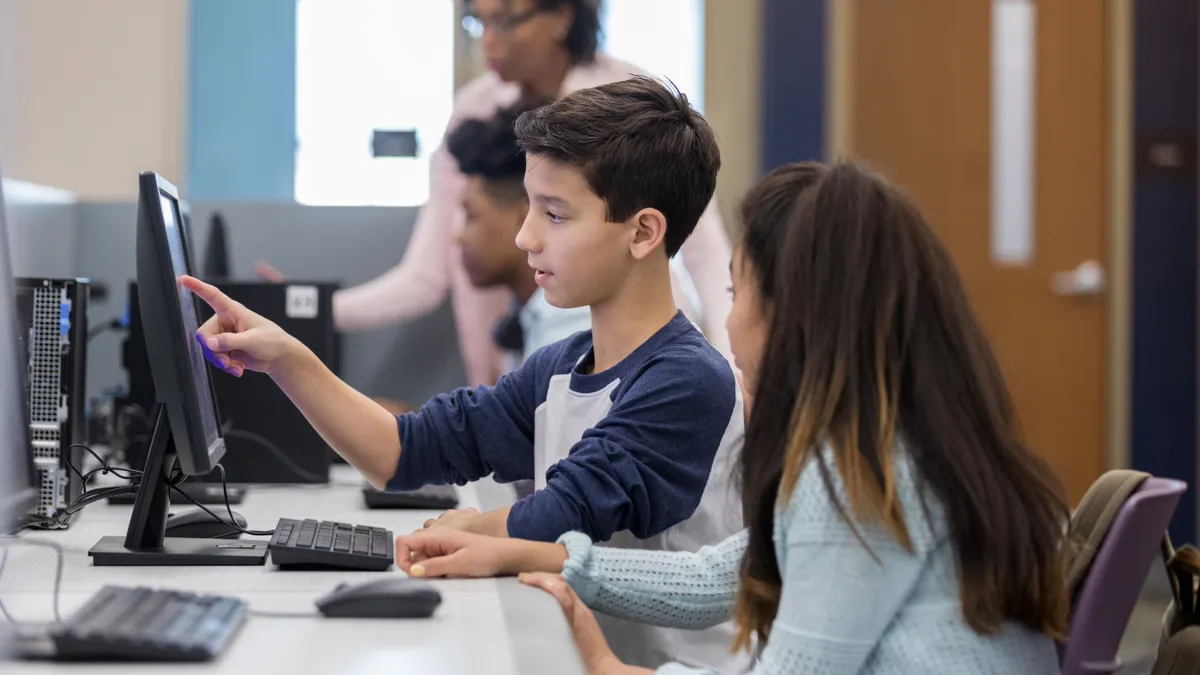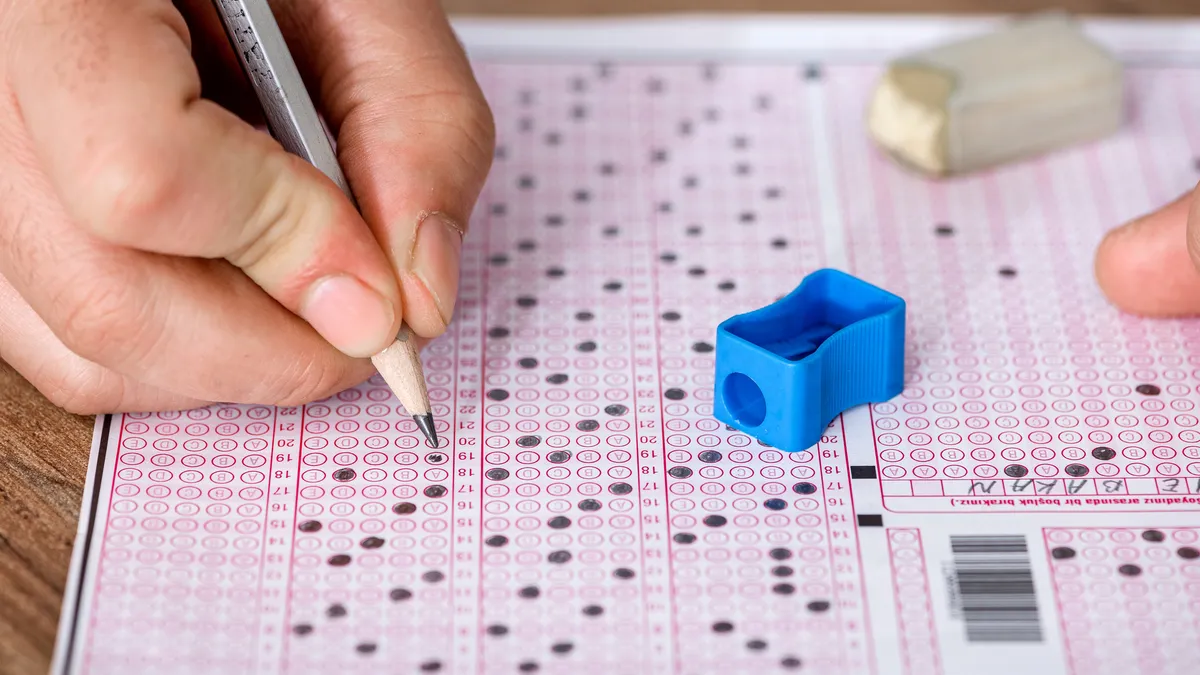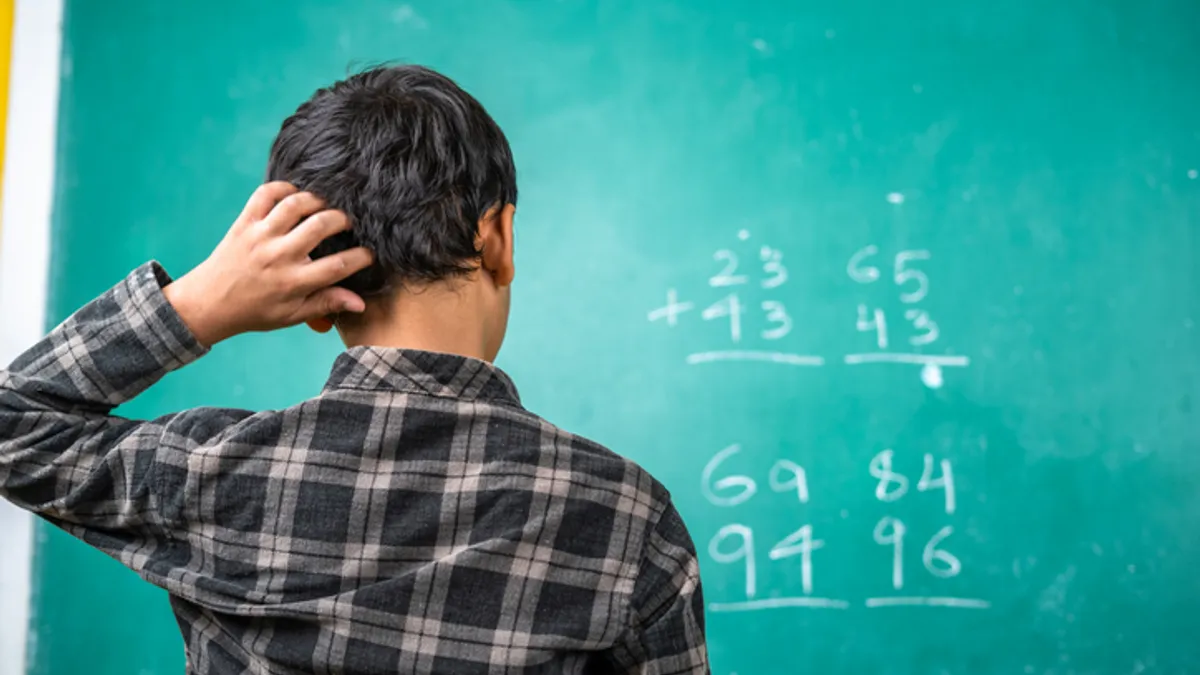When 70 6th-graders signed up for beginning band this fall, Andrew Campo got a bit concerned. Representing more than one-third of the entire grade, this year’s students all received instruments so they could join band. But when Campo thought about those numbers and the limited inventory the school has of musical instruments, he wanted to make sure all students could participate going forward.
“This year we’re okay, but if I can’t get [instruments] next year, we can’t grow,” he said in an interview. “So I’m spending this year getting instruments for next year.”
Students at Montezuma-Cortez Middle School in Cortez, Colorado — where Campo has been band director since 2011 — are usually asked to pay $40 a year to participate in band, which is available to all grades. Those children who can’t afford the fee, however, are never turned away. Campo has always made sure there is an instrument for every interested child.
He reaches out to the community and has brought in donations of instruments and even cash. This year, he’s already procured flutes, clarinets, trumpets and saxophones, the latter which he calls a “godsend, because they are prohibitively expensive, with even used ones costing thousands of dollars,” he said.
The cost of a music education
Music education is not an inexpensive offering for schools and districts. Math classes can be taught with pencils and paper. English classes with books that, while not free, aren’t tapping into the prices that a violin, piano or cello can cost a school. Then there’s the upkeep — maintaining instruments is also a budget line that schools need to consider.
John Gerdy, founder and CEO of the nonprofit Music for Everyone, which supports music education in Lancaster County, Pennsylvania, said its instrument repair program gave out $112,000 in grants in the spring of 2018. However, the group received $250,000 worth of requests.
Researchers note that the price of a music education can be measured — through data around graduation rates and test scores. Schools that offer music programs have a 90.2% graduation rate, and a 93.9% attendance rate, as opposed to schools that don’t offer music education, which have a 72.9% graduation and 84.9% attendance rate, according to research quoted by the National Association of Music Merchants (NAMM) Foundation.
Those numbers don’t surprise Danielle Roby, senior coordinator of music education and theater at Norfolk Public Schools in Virginia. The district has maintained a music program for all students — from kindergarten through 12th grade — as far back as 1911 when Maury High School first opened — and offered band, she said in an interview.
Roby said students who participate in music in their district on average score 20% to 25% higher on tests and AP tests than students who aren’t involved in these programs. The district targets a minimum participation rate of 30% to 35% at each school, even though some schools have dropped to as little as 5% to 6%, with others seeing a 70% to 80% of students participating. Getting students involved is “a priority for me,” she said.
Music for all, music everywhere
To Music for Everyone’s Gerdy, successful integration of music into schools is best when the program is not looked at as an elective, but as “the glue that can hold the whole curriculum together,” he said in an interview.
“Music is a universal language and you can apply it as an educational tool throughout the entire curriculum,” he said. “If you’re teaching about civil rights movement, it can be more enjoyable if you incorporate some songs from the era.”
Other classes can also benefit from weaving music into lessons. Students can study music waves while in science class, and English language arts and foreign language courses can use songs — and often do — to help students learn word pronunciation, definitions and other literacy skills.
Norfolk Public Schools’ Roby believes that administrators can play a big role in successful integration of music and arts into the curriculum, by immersing themselves in what their schools already have to offer, and helping make connections between courses.
“Administrators need to be open to hearing from music teachers, and then physically go in,” she said. “They need to take part and sit down in an art class or join in with a 5th grade strings class.”
Campo has no doubt that his students are enthusiastic about the music curriculum at his middle school. The band recently got their new shirts — a simple black polo top with an embroidered logo, he said.
“Three-quarters of the kids slipped them over their own shirts and wore them all day,” he said. “That’s pretty nifty.”


















